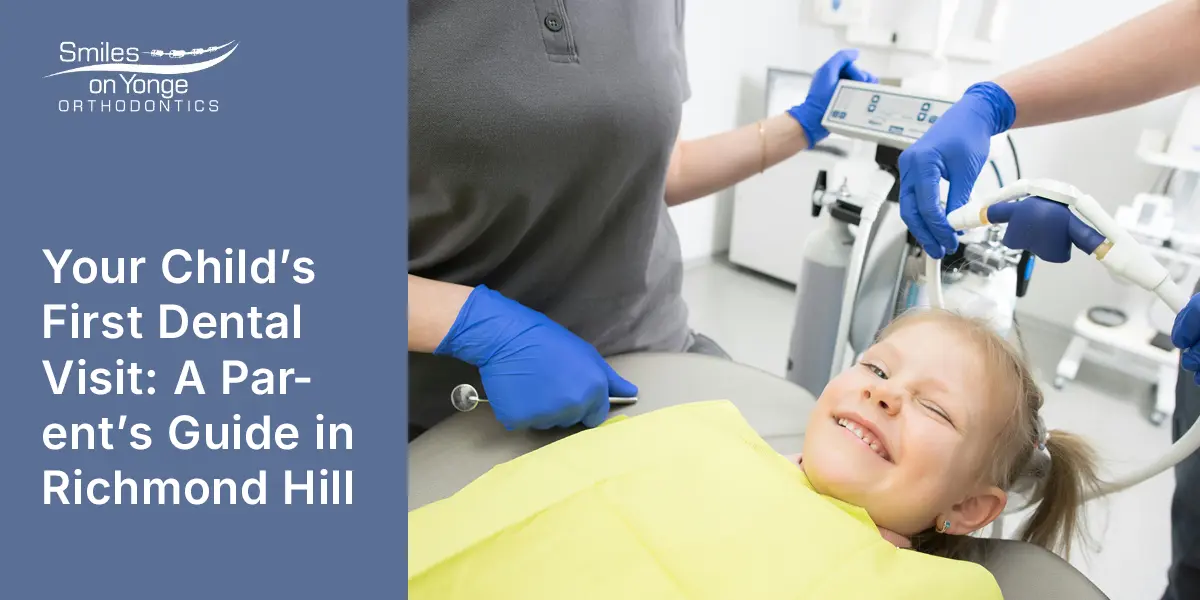
BLOG
Filling Close to Nerve Causing Pain: What You Need to Know

Why Do Fillings Sometimes Cause Pain?
The Anatomy of a Tooth
Before explaining why a filling might cause pain, it’s essential to understand tooth anatomy. Each tooth comprises three layers: enamel, dentin, and pulp.
The enamel is the hard outer layer, the dentin is the softer middle layer, and the pulp is the innermost part containing nerves and blood vessels. When a cavity is deep enough to reach close to the pulp, the filling process can sometimes irritate the nerves, leading to pain.
The Filling Procedure
During the filling procedure, your Richmond Hill Orthodontics will remove the decayed portion of the tooth and fill it with a suitable material. Sometimes, despite the Orthodontics’ best efforts, the proximity of the filling to the nerve can result in post-procedure sensitivity or pain. This pain is widespread if the decay or filling is extensive.
Common Symptoms of Nerve-Related Pain
Immediate Post-Procedure Pain
It’s not unusual to experience some discomfort immediately after getting a filling. Your tooth needs time to heal from the trauma of the procedure. Typically, this pain is mild and can be managed with over-the-counter pain relievers.
Persistent or Severe Pain
If the pain persists or worsens, it might indicate that the filling is too close to the nerve. This kind of pain can feel sharp or throbbing and even cause sensitivity to hot and cold foods and beverages. If you’re experiencing this, you must visit your Richmond Hill Orthodontics as soon as possible for an evaluation.
How Your Orthodontics Can Help
Adjustment or Replacement of the Filling
In some cases, the pain might be due to the filling being slightly too high, causing an uneven bite. Your Orthodontics can adjust the filling to alleviate the discomfort. If the pain continues, replacing the filling with a more suitable material or approach might be necessary.
Root Canal Therapy
A root canal might be necessary if the filling is too close to the nerve and is causing significant pain. This procedure involves removing the damaged or infected pulp, cleaning the inside of the tooth, and sealing it to prevent further issues. While this might sound daunting, it’s a routine procedure that can save your tooth and eliminate pain.
Preventing Filling-Related Pain
Regular Dental Check-Ups
Regular dental check-ups are the best way to prevent pain from fillings. By catching cavities early, your Richmond Hill Orthodontics can address them before they become too deep and close to the nerve.
Good Oral Hygiene
Maintaining good oral hygiene by brushing twice a day, flossing daily, and using mouthwash can prevent cavities from forming in the first place. Additionally, limiting sugary snacks and drinks can help keep your teeth healthy and decay-free.
When to See Your Orthodontic Provider
Signs You Shouldn’t Ignore
If you experience persistent pain, swelling, or sensitivity after filling, you should schedule an appointment with your Richmond Hill Orthodontics as soon as possible. Ignoring these symptoms can lead to more severe issues, including infections and abscesses.
Routine Follow-Ups
Even if you’re not experiencing pain, regular visits to your Orthodontics in Richmond Hill are crucial for maintaining oral health. These check-ups allow your Orthodontics to monitor the condition of your fillings and overall dental health, ensuring that any issues are addressed promptly.
FAQs
Why does my tooth hurt after a filling?
The most common reason for post-filling pain is that the filling is too close to the nerve. This type of filling can cause irritation and sensitivity. If the pain is severe or persists, it’s important to contact the Richmond Hill Orthodontic provider for an evaluation.
How long should pain last after a filling?
Mild discomfort can last for a few days after the procedure. However, if the pain persists for over a week or becomes severe, it’s best to visit your Orthodontics in Richmond Hill to ensure no complications.
Can I prevent pain from a filling?
While some sensitivity is normal, you can minimize pain by maintaining good oral hygiene and visiting your Orthodontics regularly for check-ups. Catching cavities early can prevent them from reaching the nerve and causing pain.
Dental Fillings in Smiles on Yonge
Dealing with a filling close to the nerve causing pain can be a frustrating experience. However, understanding the causes and knowing when to seek help from your Richmond Hill Orthodontics can make all the difference.
At Smiles on Yonge, we provide compassionate and expert care, ensuring your dental visits are as comfortable and pain-free as possible. If you’re experiencing dental pain or need a routine check-up, don’t hesitate to contact us today.
Get Back to Smiling Pain-Free
Recent Posts


Can I Get a New Retainer From a Different Orthodontist? Find Out

Is Invisalign Considered Orthodontics? 7 Reasons Adults Prefer It

Is Orthodontic Treatment Painful for Teens? What They Won’t Tell

Orthodontics 101: Can You Chew Gum With Invisalign?

Dental 101: Does Dental Insurance Cover Orthodontics?

Your Child’s First Dental Visit: A Parent’s Guide in Richmond Hill

Can I Get a New Retainer From a Different Orthodontist? Find Out

Is Invisalign Considered Orthodontics? 7 Reasons Adults Prefer It

Is Orthodontic Treatment Painful for Teens? What They Won’t Tell

Orthodontics 101: Can You Chew Gum With Invisalign?

Dental 101: Does Dental Insurance Cover Orthodontics?

Your Child’s First Dental Visit: A Parent’s Guide in Richmond Hill

Can I Get a New Retainer From a Different Orthodontist? Find Out

Is Invisalign Considered Orthodontics? 7 Reasons Adults Prefer It

Is Orthodontic Treatment Painful for Teens? What They Won’t Tell

Orthodontics 101: Can You Chew Gum With Invisalign?

Dental 101: Does Dental Insurance Cover Orthodontics?
Keep in Touch!
Smiles on Yonge
Monday: 8:00am - 4:00pm
Tuesday: 9:30am - 6:30pm
Wednesday: 8:00am - 4:00pm
Thursday: 9:30am - 6:30pm
Friday: 10:00am - 4:00pm
Saturday: call for availability
Keep in Touch!
Recent Posts

Your Child’s First Dental Visit: A Parent’s Guide in Richmond Hill




Orthodontics 101: Can You Chew Gum With Invisalign?
Contact Us
© All Rights Reserved smilesonyonge.ca
Privacy Policy | Terms of Use | Sitemap



